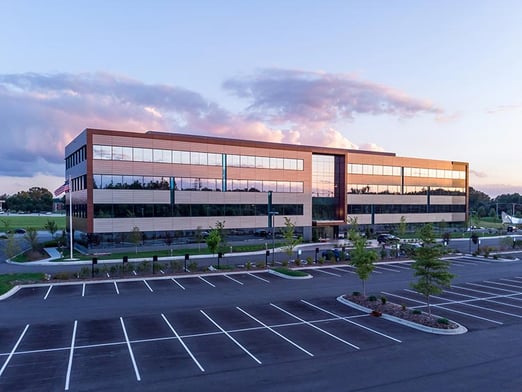
Interest rate risk is the risk that an investment’s value will change as interest rates change. This is of heightened concern during periods of interest rate hikes but is also vital to watch when the Fed is lowering rates.
Some investment activities are closely linked to interest rate changes. One example is bond rates. A long-term bond with a fixed interest rate may sell for a higher rate when savings rates are below the bond’s face value. Other instruments and securities have similar but less direct responses to changes in interest rates.
Interest rates are a key factor in determining how much you’ll pay for commercial investment properties. Understanding the correlation between mortgage interest rates, cap rates, and property values can help investors make more informed decisions when buying, selling, or holding their commercial investment assets.
When interest rates rise, it costs more to borrow capital, which can reduce profit. However, other factors also affect the overall performance of commercial assets.
How Interest Rate Risk Impacts Commercial Real Estate Investments
The value of your commercial portfolio is affected by long-term interest rates, such as the U.S. Treasury 10-year rate, which impacts cap rates used in commercial real estate valuations. Prevailing long-term rates influence cap rates when investors bid on commercial assets, and market cap rates typically have a spread versus long-term rates that reflect risk premium.
As returns on bonds and mortgage-backed securities rise, investors may look for an increased rate of return on their real asset investments. This rate of return can be determined by the capitalization rate, or cap rate, which is the net operating income of your investment property divided by its value or price. Rising cap rates lead to lower property values, while compressing cap rates mean increased values.
Cap rates typically increase as interest rates rise since there’s now additional risk to investors -- the value of future cash flows declines, which also reduces the value of investment properties. However, the relationship here isn’t so simple. Other factors, such as solid net operating income (NOI) growth, can act as a buffer between rising interest rates and declining property values. The greater the NOI growth, the stronger this buffer becomes.
Timing also is an important consideration. Short-term increases in cap rates are more quickly noticeable in your investment property’s valuation; however, the performance of any given asset is often less sensitive to cap rate fluctuations over the long term.
Assessing Interest Rate Risk
Fixed-income assets such as commercial real estate offer portfolio diversification, as well as the potential for capital appreciation and robust income. Assessing interest rate risk, as well as commercial assets by grade and location, can help investors identify a property’s strengths, weaknesses, and mitigate the impacts of fluctuating interest rates.
Managing interest rate risk can be difficult. However, investors who perform rigorous due diligence, weigh the many variables that determine interest rates, and borrow responsibly are typically better insulated from the risk of rising interest rates.
Factors That Drive Interest Rates
How can we forecast the direction of interest rates? The inflation rate plays a significant role in the health of the U.S. economy. Inflation is the rate at which prices are rising. There are measure of overall inflation, core inflation, and seasonally adjusted inflation. Rising inflation can erode consumers’ confidence in their purchasing power, as it also constrains actual purchasing strength. When the cost of goods and services increase, employers feel obligated to increase wages, contributing to the cycle of inflationary pressures.
Inflation is often the prime motivator for the Federal Reserve to raise the benchmark federal funds interest rate, which is the amount that big banks charge each other for overnight loans. The Fed takes this action to “cool off the economy” by reducing the demand for credit and therefore the supply of money circulating.
Increased demand for U.S. Treasury bonds also can bump interest rates, as can moves by the Fed to suppress interest rates by buying bonds to inject capital into the economy.
This material is for general information and educational purposes only. Information is based on data gathered from what we believe are reliable sources. It is not guaranteed as to accuracy, does not purport to be complete and is not intended to be used as a primary basis for investment decisions.



